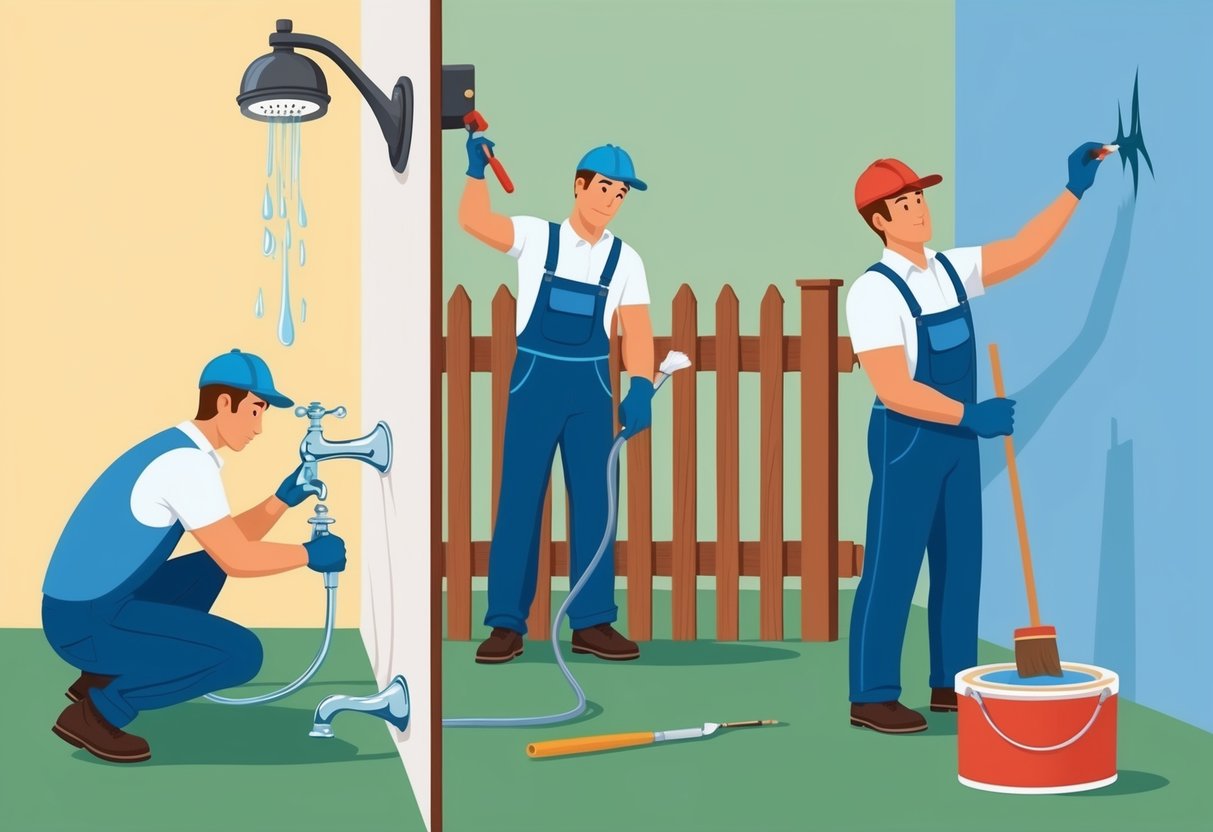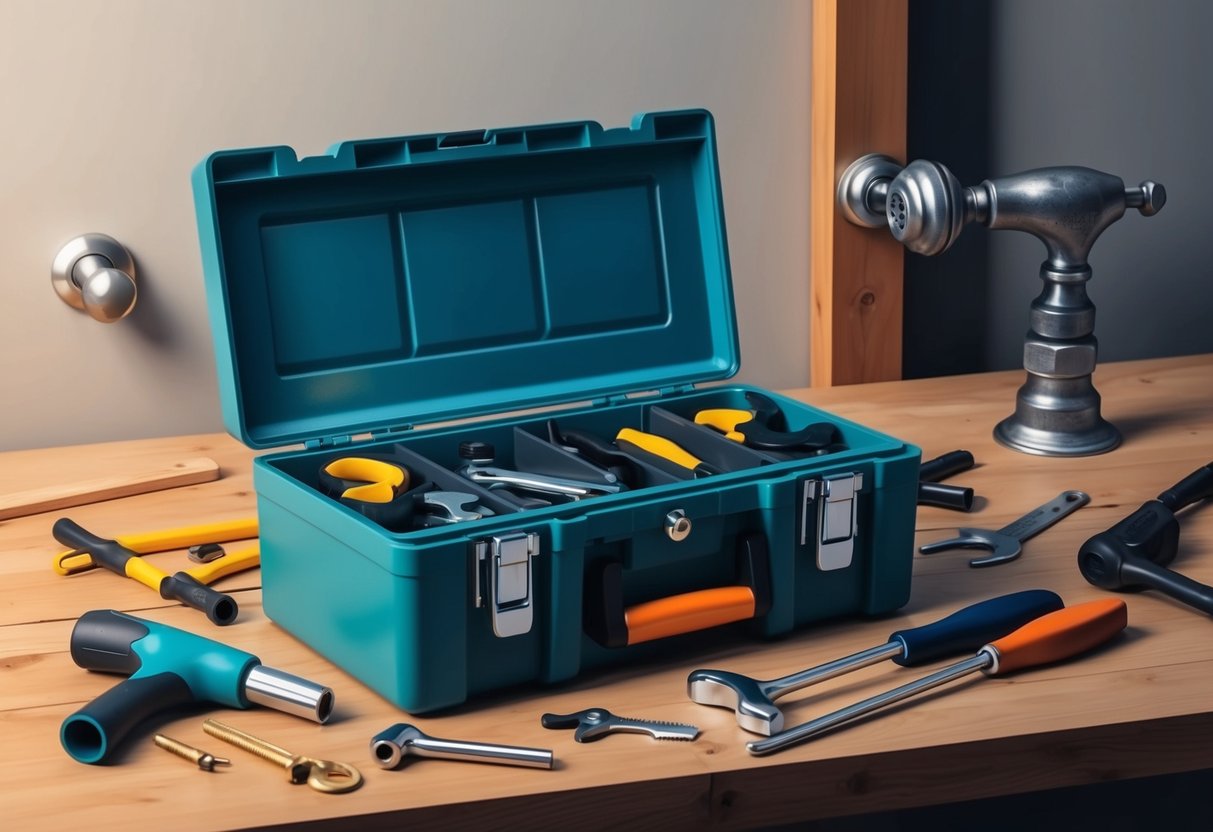
Preventive Tips for Long-Term Home Care

Proactive home maintenance saves money and prevents sudden issues. Small tasks can help keep home systems efficient while protecting property value over time.
Routine Inspections
Regularly inspecting a house for early signs of wear is critical for preventing expensive problems. Homeowners should walk around the exterior each season to look for signs of cracked siding, damaged roofing, clogged gutters, or foundation problems.
If identified, these issues should be addressed quickly to reduce the risk of water leaks or pest infestations. Indoors, checking plumbing under sinks, listening for odd HVAC noises, and testing smoke alarms ensures all key systems work as intended.
Spotting water stains, loose tiles, or aging caulk in kitchens and bathrooms can signal issues needing attention. For specific checklists and more in-depth guidance, see this home maintenance checklist.
Scheduling Regular Upkeep
A key part of sustainable diy home maintenance is following a set schedule for critical tasks. Cleaning gutters every spring and fall helps prevent water damage.
Changing HVAC filters every 1-3 months and getting the system serviced annually keeps heating and cooling efficient. Homeowners should also aerate and mow lawns, trim back vegetation near siding, and move stored firewood away from the house to reduce pest risks.
Patching small wall holes and touching up paint preserves interior and exterior finishes. Establishing a home maintenance calendar or using reminders ensures tasks get done throughout the year.
These steps are easy to follow using seasonal maintenance guides.
Frequently Asked Questions

Every homeowner benefits from understanding basic home repairs, regular maintenance schedules, and essential supplies. Simple do-it-yourself fixes can improve safety, lower costs, and keep a property in good working order year-round.
What are essential yearly maintenance tasks every homeowner should perform?
Key annual tasks include inspecting the roof for missing or damaged shingles, cleaning gutters to prevent water damage, and servicing HVAC systems for efficiency. Draining the water heater, checking for plumbing leaks, and reviewing caulking around windows and doors are also critical steps.
Exterior paint and siding should be checked for damage to prolong their lifespan.
How can homeowners prepare their homes for winter weather?
They should insulate exposed pipes to prevent freezing, seal gaps around doors and windows, and clean out chimneys. Installing weather stripping and storm windows increases energy efficiency.
Clearing gutters and downspouts helps avoid ice dams and water infiltration during winter storms.
What should be included in a basic home maintenance checklist for new homeowners?
A starter checklist should cover testing smoke and carbon monoxide detectors, inspecting the foundation for cracks, and tightening loose handrails. It’s important to flush the water heater, replace filters in heating and cooling units, and lubricate garage door mechanisms.
Cleaning dryer vents and checking roof and attic ventilation add safety and value.
What are some simple yet effective DIY repairs that can be done without professional help?
Common tasks include patching small drywall holes, fixing leaky faucets, and re-caulking tubs or sinks. Homeowners can also relight pilot lights and clean dryer vents without hiring a contractor.
Stopping a running toilet or replacing air filters are other quick fixes that keep home systems running well. For more ideas, see this list of DIY repairs.
How often should exterior home inspection and maintenance be done to keep your home in good condition?
Exterior inspections and maintenance are best completed at least twice a year, in spring and fall. Homeowners should look for signs of water damage, rot, or pest infestation.
Power washing siding, cleaning windows, and trimming trees away from the roof are seasonal tasks that help maintain curb appeal and structural integrity.
Which tools and supplies should a homeowner always have on hand for general home repair tasks?
Every homeowner should keep a basic toolkit including a hammer, screwdrivers, pliers, an adjustable wrench, a tape measure, and a utility knife.
Supplies like duct tape, wood glue, level, flashlight, nails, and screws are useful for quick repairs.
A sturdy ladder and safety gear such as goggles and gloves make DIY projects safer and more efficient.
For details about essential tools, visit this guide for beginners.